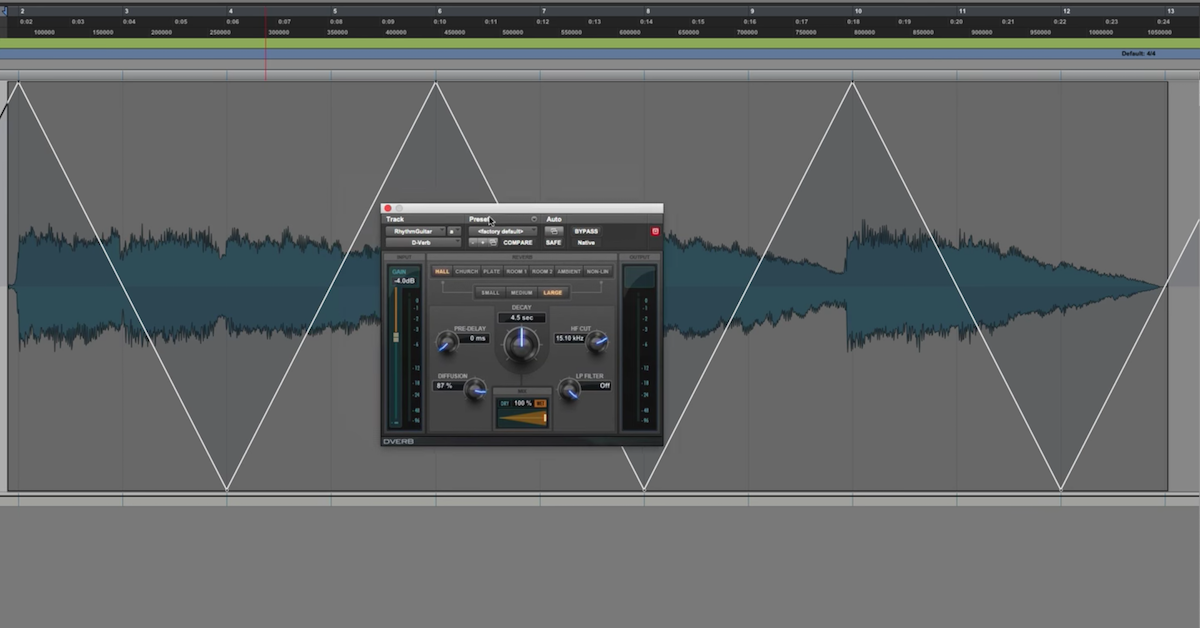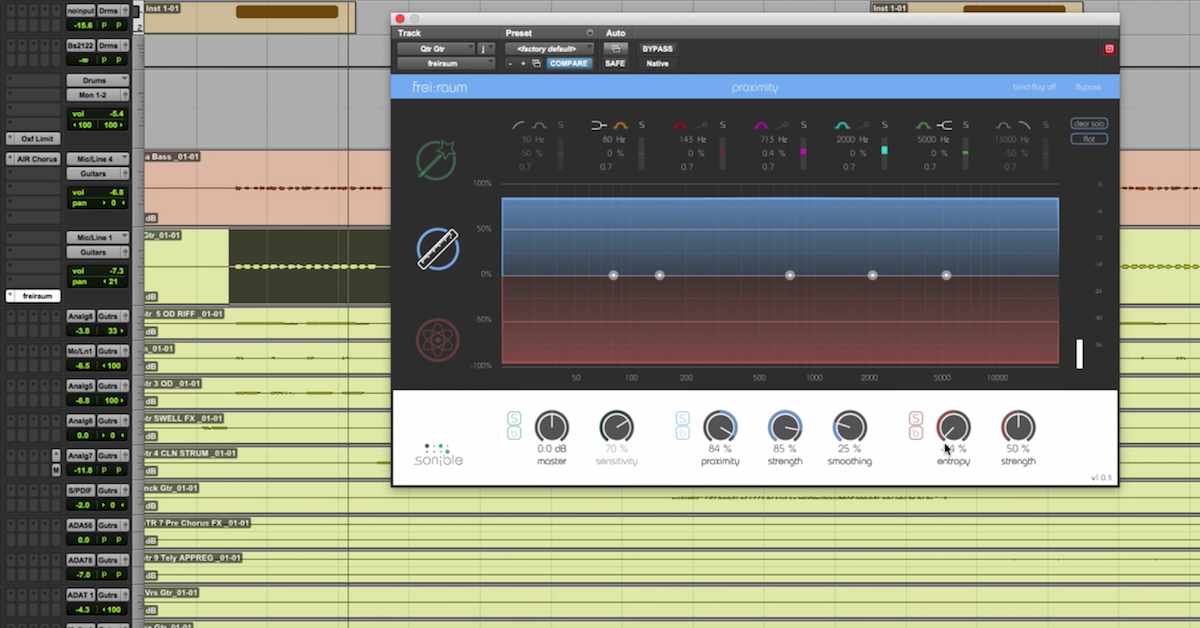How to Create Width, Height and Depth in a Mix
Article Content
The hallmark of a great recording/mix for me is one where the music all lives within a tangible, dimensional world. The exception being songs that call for a two-dimensional or more lo-fi approach.
In general, a recording that has width, height and depth creates for a compelling sound.
And truthfully, I think part of the magic of a song is pulling the listener into a different world — creating the illusion of the space only adds to that effect.
What is width, height and depth? Just like in film or paintings we can create the illusion of three dimensions on a two dimensional surface.
In film the surface is the screen, in paintings it’s the canvas, and in music it’s the stereo field.
The only difference is that with a screen or canvas, the height is already given simply by its existence, whereas with the stereo field we have to create an illusion of “top-to-bottom” dimension.
Height
So let’s start with height.
It’s a strange and interesting phenomenon that we hear high pitched frequency content as coming from above, and low tones coming from below.
Partially this is due to suggestion. We subconsciously equivocated “high” pitch with “high on a vertical scale.” Partially, this is due to common tweeter placement with speaker woofers most often being lower than the tweeter in vertical alignment. Partially, this phenomenon is also caused by the way low frequency tones project. The wider dispersion of low tones allows them to reflect off the nearest surface such as your desk. Higher tones are more directional and will reach your ear without as much near reflection over short distances.
For these reasons and probably others, we tend to hear high harmonic content as “up” and low harmonic content as “down.”
By creating contrast in the extremes of the frequency spectrum we can make a mix sound “tall.”
If just one naturally bright element like a bell or hi-hat is a touch brighter, and one low element like a kick or bass is a touch subby-er, the whole mix will expand.
Width
Width is also about contrast.
If two sounds are exactly the same and play at exactly the same time from each speaker, we perceive it as coming from a center point between the two speakers. This is often called the “phantom mono” or “phantom center.”
The key here is similarity. As soon as the sounds become different, or the timing becomes different, they start to spread across the stereo field.
It stands to reason that two sounds that are easily localized (meaning our ear can clearly hear where the sound is coming from like a woodblock, triangle, or glockenspiel) played at different times will sound very wide.
The greater the contrast between what’s happening in the left speaker versus the right speaker, the wider the image.
While this seems fairly simple, remember that in a dense mix it’s very easy to get harmonic stew. Sounds can begin to run together pretty easily.
A prime example is doubled guitars. If you double a guitar part four times and pan two doubles to one side and two doubles to the other, the end result is often not as wide as desired.
The key here is to create as much contrast as possible: use different guitars, amps, and/or mics and mic placement for the doubles. Create contrasting tones. This will allow the ear to hear more separation when they’re panned apart.
On the subject of width, I’m also generally a proponent of using natural panning, rather than relying on chorusing, haas delays, or doublers. Two different takes of a guitar line is going to sound wider than one take sent through a doubler.
Depth
Lastly we have depth.
Depth is a bit tricky. There are three things to remember in terms of defining front-to-back placement.
- Louder sounds closer
- Brighter sounds closer
- Less reverb sounds closer
And all of the converse is true as well.
Start with level. It’s so much easier to mix when you have an idea as to where something needs to live in terms of volume. Keeping in mind your front-to-back image while setting levels will help things fall into place very quickly.
In terms of tone, high frequency sounds loses their energy faster than low frequency sounds over distance. So as a general rule of thumb, you can roll off some highs to help shift things back. It should also be noted though that when sounds get very close to us we tend to hear the low-midrange more prominently as well.
That “in your ear” sound is more characterized by low-mid forwardness than by brightness. It’s a bit counterintuitive, but once you get a feel for it, finding the right tonal balance will make sense.
Then there’s the reverb. Reverb is a whole subject unto itself, but, suffice to say that generally the more reverb a sound has the further back it will fall.
Going further: the shorter the pre-delay, the farther away the element will seem. And, reverb that is higher in late reflections rather than early reflections will also be indicative of a sound that is further away.
Level, pre-delay, and early vs late reflections — these things all work in conjunction to form a realistic spatial sound.
Of course, getting natural space at the recording stage is best. If you know you want your drums to sit back a bit, place the overheads a little further from the kit. And record the room capture from further away too.
Contrast
The linchpin to all of this is contrast.
In order to make something sound very close, something else needs to sound far away.
In order to make something feel high in the speakers, something else needs to feel low.
This isn’t the easiest stuff when it comes to engineering records and it takes a long time to get down. But once you do, you’ll quickly find your records having that special hard-to-place quality that just sounds “like a record.”





